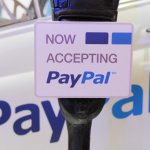On-demand pay is a decisive pull factor for employees — study

On-demand pay is now preferred by most US workers, ever since the COVID-19 pandemic forced the population to reassess life priorities, including work and financial choices. 2020 was a challenging year for many employees, with a new report indicating that 63% of workers reported increased financial stress since the pandemic began.
With employees worrying about finances, there is less engagement at work, thus negatively impacting their productivity and performance including mental and physical health. Millennials were especially hit hard, with more than two-thirds (72%) reporting increased financial stress.
An online study conducted by The Harris Poll for HR and payroll management company Ceridian found that a majority of US workers (83%) preferred “streamed access to earned wages” at the end of the workday or shift, compared to the traditional fortnight or monthly salary scheme.
The survey of 1,004 U.S. workers also found that:
- 78% of workers said that employer loyalty would increase with on-demand pay and free services.
- 80% of workers want their wages automatically streamed into their accounts.
- 81% of workers with household incomes of $100,000 and above prefer on-demand pay.
- The vast majority (81%) would take a job with an employer providing free access to payment on-demand.
In a press release, Seth Ross, Ceridian’s Dayforce Wallet and Consumer Services general manager said, “The survey showed that on-demand payment is not only a differentiating factor but also a requirement.”
“Through streaming payments, employers can give employees more control over their financial situation,” he said.
According to E&Y, on-demand pay solutions can offer utility not just to lower earners or individuals of lesser financial means. Access to earned income can give all employees far greater control over their finances by more effectively aligning revenue with expenses, allowing better budgeting and supporting their financial well-being.
Traditional banks usually hold onto payment for two days before releasing the funds to the account holder, but companies such as DailyPay allow employers to offer their employees on-demand pay, delivering their money to their bank as early as the day it is earned.
Californian company Even has an on-demand pay platform that allows its users to access their earned wages at any time through Instapay. Users can set automatic savings from their paychecks to achieve their savings goal and start breaking their paycheck-to-paycheck cycle. The fintech firm has worked with Walmart and PayPal to give employees access to their daily wages.
Approximately 32% of all wages spent are allocated to benefits, vacation, leave and insurance in the United States. The investment, which amounts to US$8.4 trillion in wages, is spent primarily on programs to make employees healthy. Therefore, on-demand pay is one of the fastest-growing segments of this vast market.
Offering on-demand pay with financial health support is becoming a sought-after job perk and can be a major deal-breaker for an employee when working for a company. It is not only compassionate at a time when many are plagued by uncertainties; it also makes for shared goodwill and a win-win situation for both the employee and the employer.










